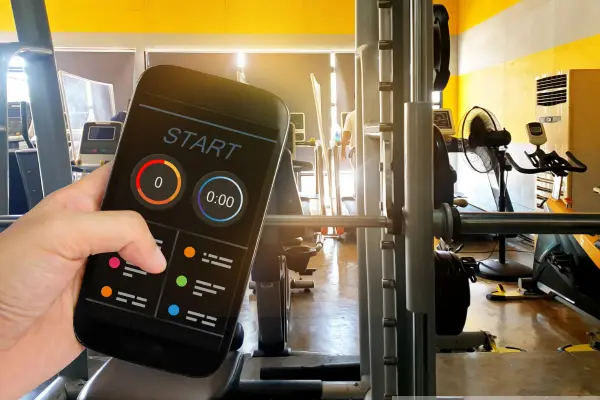Table of Contents
Understanding Steady-State Cardio for Endurance
Steady-state cardio is a foundational exercise for improving cardiovascular endurance. It involves maintaining a consistent, moderate intensity over a longer duration, making it ideal for beginners and those looking to enhance their aerobic capacity. Common examples include running, cycling, and swimming, typically performed for 30 to 60 minutes. This type of workout is excellent for:
- Building endurance: Prolonged activity strengthens the heart and lungs.
- Fat burning: Steady-state cardio primarily uses fat as a fuel source.
- Joint-friendly exercise: Low-impact options like cycling and swimming reduce strain on joints.
However, it’s essential to monitor intensity to avoid overuse injuries. While this workout is less intense, its repetitive nature requires proper warm-up and cool-down to maintain joint health and flexibility.
Boosting Efficiency with Interval Training
Interval training introduces variations in intensity, alternating between periods of high and low effort. This method increases cardiovascular efficiency and burns more calories in less time. For instance, a runner might sprint for 30 seconds, then walk for a minute, repeating the cycle for 20 minutes. The key benefits include:
- Increased calorie burn: Alternating intensity elevates metabolism.
- Improved cardiovascular fitness: It challenges the heart and lungs more than steady-state cardio.
- Versatility: Can be adapted to various exercises like cycling, swimming, or rowing.
Interval training is particularly effective for those with limited time but still wanting a comprehensive workout. However, beginners should start gradually to avoid excessive strain on the heart and muscles.
Maximizing Results with High-Intensity Interval Training (HIIT)
HIIT, or High-Intensity Interval Training, is a more advanced form of interval training. It involves short bursts of maximum effort followed by brief recovery periods. Workouts are typically under 30 minutes, yet they offer substantial benefits:
- Time efficiency: HIIT workouts can be as short as 15-20 minutes.
- Enhanced metabolism: Post-exercise calorie burn can last for hours.
- Heart health: Rapid shifts in intensity improve heart rate variability.
Because of its intensity, HIIT is recommended for individuals with a solid fitness foundation. It’s crucial to maintain proper form to prevent injuries. Overdoing HIIT can lead to burnout, so incorporating rest days and varying workout intensity is essential.
Incorporating NEAT into Daily Life for Continuous Activity
Non-Exercise Activity Thermogenesis (NEAT) represents the calories burned during everyday activities not considered traditional exercise, like walking, cleaning, or fidgeting. Although often overlooked, NEAT plays a significant role in overall calorie expenditure. Examples include:
- Walking more: Choose stairs over elevators.
- Standing while working: Use a standing desk or take frequent breaks.
- Active commuting: Walk or bike instead of driving.
Increasing NEAT can significantly impact weight management and cardiovascular health, particularly for those with sedentary lifestyles. By consciously adding more movement into your day, you can enhance calorie burn without structured exercise, making it a vital component of a holistic cardio routine.
Combining Cardio Workouts for Optimal Results
For the best results, combining different types of cardio workouts is recommended. This approach prevents plateaus, keeps the workouts interesting, and targets different aspects of fitness. A balanced weekly routine might include:
- Steady-state cardio: For endurance and fat-burning.
- Interval training: To boost cardiovascular fitness.
- HIIT: For maximum calorie burn in less time.
- Increased NEAT: To maintain activity throughout the day.
Varying your cardio ensures that all fitness components, such as endurance, speed, and metabolism, are addressed. This comprehensive strategy also reduces the risk of injury by allowing different muscle groups to recover while others are engaged.










